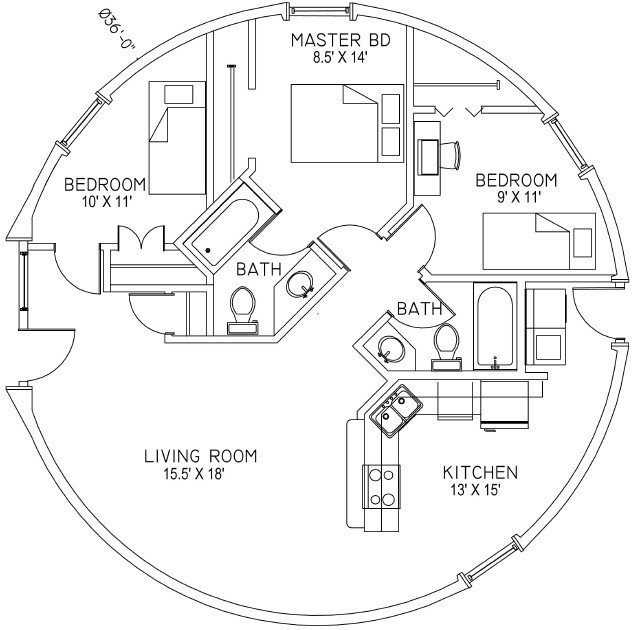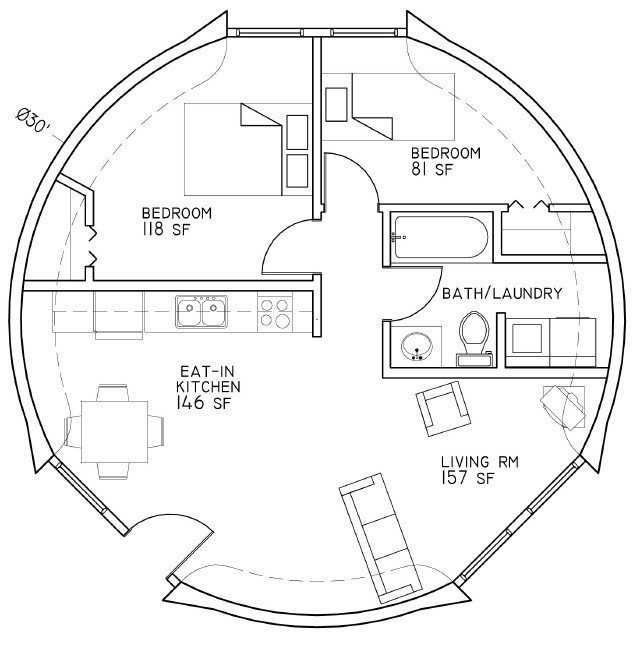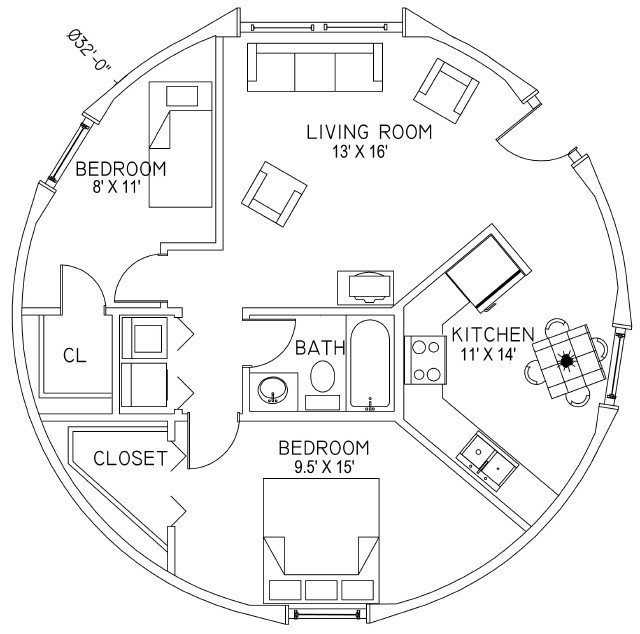Practicality vs An Old Dream
Seniors often come to Monolithic looking for help in designing a home for their golden years. Some are very realistic and practical about what they need, what they can comfortably afford and how they want to spend the rest of their lives.
Unfortunately, others are not. Although their nest is now empty, they think that now is their time to finally build their dream-home — a huge, multi-roomed and/or multi-storied, house that they could have used, but couldn’t afford, when they had children to raise. So, although they no longer need what I call a McMansion, their wish to finally realize that long held dream clouds their judgment.
Often, these folks are the ones who envision their retirement and senior years filled with travel and activities that they simply never had the time or money for when they were younger. So why would they want to saddle themselves with a McMansion?
This kind of thinking doesn’t make sense and is of great concern to me — probably because I’m now a senior and an empty-nester. I think a senior house, whether for one or two people, should comfortably and affordably meet the needs of its occupants and be easy to maintain, both inside and out. Moreover, senior housing should provide safety and security. The elderly should not live with an undue fear of natural disasters, burglaries and break-ins, or even household expenses becoming unaffordable.
Monolithic’s Suggestions for a Senior Home
A Monolithic Dome – It can safely shelter and protect against natural disasters, such as tornadoes, hurricanes and earthquakes, and it’s fire-resistant and termite-proof. The concrete dome-shell is impenetrable and the windows and doors can be equipped with a security alarm system. In addition, Monolithic Domes are energy-efficient and easy to maintain. These factors make a Monolithic Dome eligible for lower insurance premiums.
Levels – Keep it to one floor. As we all know, aging brings physical changes. Those stairways we easily skipped over in our younger days are not so easy to climb when we get older.
Size – Most seniors like having two bedrooms, or if money is not a problem three bedrooms, but the bedrooms only need to be small. Floor plans for such a house could easily provide living areas of 800 to 1200 square feet. There is no need for more. You can put a really nice three bedroom, two bath house in a Monolithic Dome with a living area of 1000 to 1200 square feet. Other advantages of a small home include lower property taxes, homeowner insurance, energy use and maintenance.
Accessibility – Monolithic Dome homes can be designed with total wheelchair accessibility. We seldom know what the future holds for us. Including a shower that you can easily maneuver a wheelchair into is a good idea — even for seniors who are not wheelchair-bound at the time they’re planning their home.
Floor Coverings – That’s often a tough decision. Ceramic tile is the easiest to keep clean, the least likely to trigger allergies and the easiest to move on with a walker, cane or wheelchair. But ceramic tile may be too hard on the legs. Softer options include bamboo, wood or carpeting. Then too, a living room and bedrooms could have area rugs over a harder surface. Choices should depend on the owners, their location and their lifestyle. The amount of traffic through the home, the likelihood of dirt getting tracked in and the ease with which a floor covering can be cleaned should all be considered.
Windows – Getting up on ladders or chairs to wash windows is risky — especially for older folks. Therefore, windows should be no taller than what your outstretched arm can reach when you stand firmly on the floor. As for window coverings, consider simple, pull-down shades that don’t have dust-collecting slats and corners and no-iron, fabric curtains that can be easily taken down, machine washed and dried and rehung.
Bathrooms – Unless the residents want one, bathrooms need not include tubs. Most seniors feel safer showering — especially in a shower with a seat. Both shower and tub should include safety bars and non-slip floors.
Kitchens – As people age, many begin eating smaller amounts and/or dining out more often. Some lose the desire and energy to cook and entertain. When that becomes the reality, you need not equip your kitchen with all those big appliances. Some seniors may not even want or need a dishwasher. Multiple ovens or big stoves certainly are not needed. Most seniors could manage comfortably with a mid-size, frost-free refrigerator/freezer, a microwave oven and a few small appliances such as a toaster oven, hot plate and slow cooker.
Furniture – Small, light pieces that can be easily moved for cleaning are a good idea. Rather than heavy dressers and chests, consider molded plastic drawers that can be stacked and arranged into various configurations.
Painting – Plan a senior home so that the necessity for painting, both the interior and exterior, occurs as infrequently as possible. Keep in mind that vision grows dimmer with age. Interior walls painted white, off-white or a light pastel usually work best.
The Compound House: A Wise Alternative
Obviously, planning a senior home takes thought. But it’s very important. It’s also important to think about how you want to spend your senior days.
Depending on what those plans include, you may consider a Compound House. It combines Monolithic modules, each with a specific purpose. One such combination could include a basic home module for you and a second unit for a family member or as a rental. For seniors who need living assistance or for folks with extensive travel plans such a combo works extremely well. The senior needing assistance could have loving family right next door. And the one who wants to travel could leave and not worry about an uninhabited home.
For more information on a Compound House, please click here.
Note: December 2, 2008


